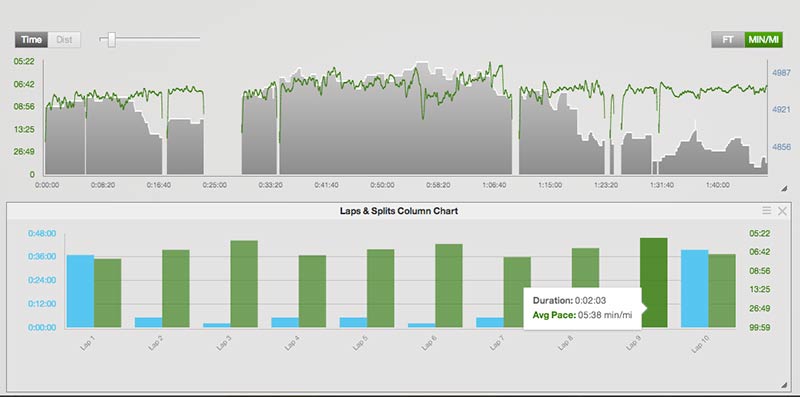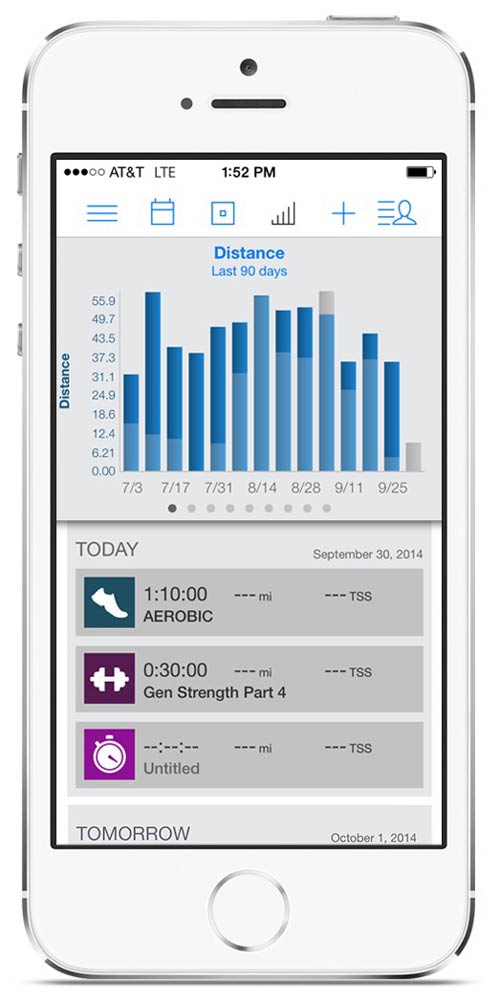How University of the Pacific re-wrote their record books using technology
[mashshare]
By Briana Boehmer, TrainingPeaks
“That which is measured improves. That which is measured and reported improves exponentially.” – Karl Pearson (Founder of mathematical statistics and significant contributor to the science of biometrics)
As a coach, you most likely have a list of objectives each season. For many coaches, those objectives include improvement over the previous year. Seems like a simple goal, but it’s not always easy to achieve.
Josh Jones, head women’s cross country coach at University of the Pacific, knew that things needed to change as he thought about the 2014 season. He honed in on what would make a difference by taking a completely fresh look at how he was delivering and analyzing training. As a result, Jones orchestrated a season to remember.
Prior to the 2014 season, the 6K school record was 22:20. During the season, three UOP runners broke 22 minutes. Two others slipped into 10th and 11th on the all-time rankings. Many others achieved personal bests.
Coach Jones gave a lot of credit to his athletes, “We made history by not only running fast, but running smart,” he said. “That’s what made the difference. The individual efforts by each runner made it possible to accomplish our team goals together. I couldn’t be more proud of these ladies for elevating the program to a new level this year.”
How did Jones set up his athletes to reach this new level? As any coach will tell you, the result of a major breakthrough is more than meets the eye. Before the season started, Jones decided he needed the tools to better track his team’s training. He knew he had to demonstrate the importance of the workouts he was giving his team, in addition to creating a way to better guide future outcomes.
He began by purchasing Garmin watches for every runner. He wanted to monitor his athletes’ training and give them a precise way to hit the objective of each workout. Next, he started using TrainingPeaks, web-based software that allowed him to use the data from the watches to help him plan, track, and analyze each runner’s training. The pieces were coming together.
Jones set appropriate training zones for his athletes and guided them in making sure they trained according to the purpose of each workout. Communication about workouts and progress immediately improved.
“The software and GPS devices gave me and my athletes a new way to communicate and explain to each other how training was going,” explained Jones. “As a coach, you have to trust what an athlete is telling you and sometimes their stubbornness gets in the way. With everything now being fully tracked, I could show the data to the athlete to demonstrate if they were working too hard or not hard enough.”
Jones also put extra emphasis on providing immediate feedback and guidance with the details of each workout. He made sure his athletes understood their training zones and goals. Each run had a purpose and making sure the athletes could understand that purpose was amplified by seeing live data.
In many sports we hear coaches talk a lot about “post-game analysis.” For Jones, this meant making sure that every workout and race was tracked and analyzed, rather than simply completed. It also meant that before a workout the objectives were clear and the runners understood the outcome. Jones found it easy to do this kind of pre- and post-workout analysis using the TrainingPeaks mobile app. “My athletes used the mobile app to look at workouts and log them right from their phone. This gave me a great tool to monitor mileage, zones and work they were doing or not doing,” he said.

Figure 1: Workout Data analysis in TrainingPeaks software.

Figure 2. TrainingPeaks smartphone application.
Pacific’s success this season did not go unnoticed. Lindsay Wourms was named WCC women’s cross country runner of the month for October after she broke the school record twice, bringing it down to 21:26. Teammate Becky Grabow was just 7 seconds behind.
Coach Jones knows this momentum is just the beginning. “Our team is coming off its best season in school history and part of that success was the athletes being able to use the software to see (not just feel) how their body responds to the training and for us to make the necessary adjustments throughout the week or month.”
All coaches can learn from what Jones did with his team in 2014. He demonstrated key characteristics we find in coaches and programs that are constantly setting new bars:
- Create roadmaps. To know where you want to go, you must have an idea of how to get there. Driving from Los Angeles to New York is a lot easier with directions. Whether you believe in periodizing training or have your own formula for peaking your athletes, a season roadmap allows you to make educated decisions as training progresses.
- Measure. Evaluating progress is only possible by measuring outcomes.
- Provide feedback.
- Perform training and racing analysis.
- Always learn.
When we stop looking for ways to get better, we let our competition surpass us. With a successful season under his belt, Jones will refine his coaching process by constantly tracking, measuring, and analyzing to continually find ways of creating breakthrough seasons.
Please share this article so others may benefit.
[mashshare]

